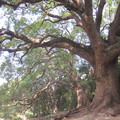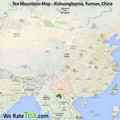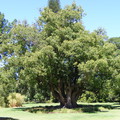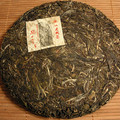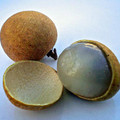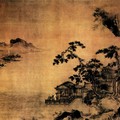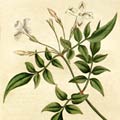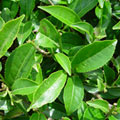To the village of ethnic minorities in Yunnan to visit the old tea tree
Learning how to identify gu shu & make maocha - The Tea Urchin
„Mr. Gao showed us how to identify gu shu (ancient tree) tea leaves by looking at their texture, rubbing them between your fingers, and eating them raw. Old tea trees produce thicker, more leathery leaves that don’t easily come apart when you rub them. And gu shu buds should be white & shiny. When you chew them, the flavor is very bitter but there is also a strong sweet fragrance, and the juice is relatively easy to swallow. Tai di cha (terrace plantation tea) is also bitter but with a strong, lasting astringency on the sides & front of the tongue, and the juice is harder to swallow.“
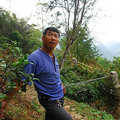
Quotes Tags: Pu-erh, Gushu, Tea production, Experiencing tea
- Discussion: 0 comments
- Write a comment
Teas - Pu-erh
2005 Xiaguan Yushang Tuo
 0 reviews
0 reviewsThis 200 gram tuo [nest shaped] tea from Xiaguan Tea Factory was stored in Guangzhou...
2005 Changda Hao Yiwu Mansa Gu Shu Cha
 1 review
1 reviewChangda Hao is one of famous and established earlier tea factory in Yiwu town. Changda...
Lao Banzhang 2004 Bamboo Tube
 1 review
1 reviewLao Banzhang 2004 is a pu-erh pressed into bamboo tubes. Mighty and rich tea soup...
2013 Chawangpu Bada Zhang Lang Xiao Bing
 1 review
1 reviewNicely processed and completely manually produced tea from Bada mountains. The tea is...
2013 Spring Mengsong Baotang Gushu Maocha
 1 review
1 reviewMengsong is one of the oldest ancient tea area in Menghai. Baotang old village is...
968 *Yunnan Haiwan Pu-erh Tea Old Comrade
 0 reviews
0 reviews2008yr 968 *Yunnan Haiwan Pu-erh Tea Old Comrade LaoTongZhi * Pu erh Tuocha Ripe /Shu...
Quotes - Pu-erh
„Pu-erh leaves are picked as one bud and 3-4 leaves whilst green tea is picked as one bud and 1-2 leaves. This means that older leaves contribute to the qualities of pu-erh tea.“
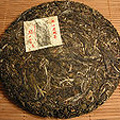
Quotes Tags: Pu-erh
Video - Pu-erh
Theme
Teas
2014 Jingmai Gu Shu Huang Pian
 1 review
1 reviewThis tea is from Jingmai Da Zhai, grown in Da Ping Zhang area, and it is considered to be of the finest...
2012 Mangzhi Huang Shan Cha Xiao Bing 200g
 1 review
1 reviewThis tea came from Mangzhi mountain which is located in the west of Xiangming village Mengla county, and...
JungJak 2014 ECO Korea
 1 review
1 reviewKorean green tea picked in the spring of 2014 in Hadong district, Jiri mountains. Grown and produced by an...
Tea by region
We will help you with tea selection.
Do you like quality loose tea?
We will help you to find the right one for you. Be inspired by tea ratings of other tea lovers. Rating stars could help you.


Review your cup of tea.
Review the tea you are drinking and help other tea lovers to find the right cup of tea.






 Shops
Shops Share on Facebook
Share on Facebook






